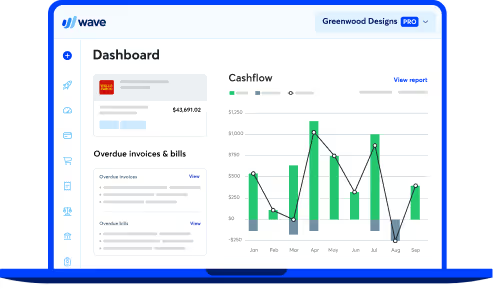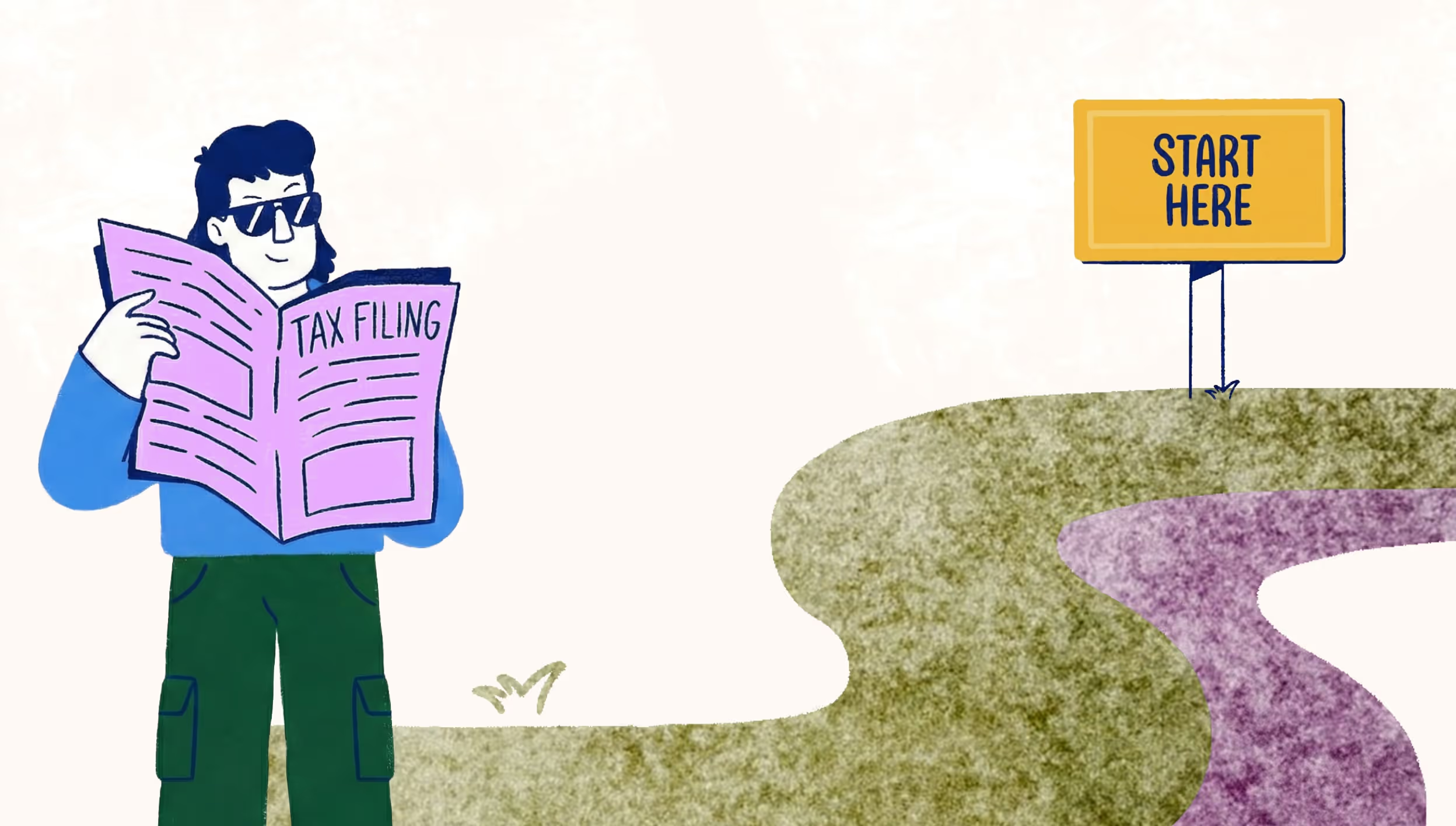
7 passive income strategies that can increase cash flow
Wouldn’t it be great if you could make money in your sleep?
It’s easier to do than you might think, thanks to two words: passive income.
Passive income is any incoming cash flow that doesn’t require active involvement or ongoing work. This inflow is passively generated; in other words, once you “set it up,” this income essentially runs on autopilot.
How passive income strategies can help entrepreneurs
Passive income is great because it doesn’t require any active input from you. Service-based businesses, for example, rely on the service provider’s time and effort to provide said service. If you don’t have the time to provide the services, you have no way of generating revenue.
Plus, passive income takes the pressure off your other income streams. Maybe you have a business with seasonal highs and lows.Passive income can help even out your cash flow during those slow times.
Need some ideas to keep you busy during your slow season? Here are 5 ways to improve your business during off-seasons.
As an entrepreneur, you know how important it is to have a safety net. Passive income can be the buffer required to have the confidence to pursue your next business endeavor or invest capital into growing an existing business.
And for entrepreneurs facing burnout or in need of a break, passive income can be the key to taking time off while still generating cash flow. In order to get started, it’s helpful to sit down and create passive income strategies that make sense for your business.
7 passive income ideas to get started
There are so many passive income ideas out there; choosing the one that’s right for you depends on your skill set, resources, and goals. To help you narrow them down, here are a few common strategies some businesses have successfully implemented:
1) Digital products
Digital products can mean a wide range of things including courses, prints, downloads, software, and more. This is a great route to go because so many of these products require minimal investment.
“The barrier to entry online is low, and the ROI more substantial,” says Adam McIntyre, the entrepreneur behind BrandPacks, DesignerCandies, and multiple restaurants. He’s developed software products that offer high margins and cost little to operate, while running almost completely on autopilot.
If software sounds too involved or technical for you, you can stick with a course or ebook. Ben Watson, CPA and virtual CFO at Dollar Sprout, created his Business Launch Kit in collaboration with another CPA. “It takes some time and effort to build, but once the modules or downloads are saved on a server, it’s like having a never-ending inventory that can be sold effortlessly,” he says.
You might already have digital content that you can turn into passive income. Designers might sell printed products through sites like Creative Market and ArtWeb, while photographers can list photos on stock photo sites.
Peter Koch sells his videos online through Newsflare—and he’s made more than $4,000 from this revenue stream alone. “Major media outlets are hungry for new, interesting video content,” he says. “You don’t need a fancy camera—phone videos are fine as long as the content is interesting.”
2) Investment property
Investment property is a common and surefire way to generate passive income. It requires capital upfront, but if you have it, the long-term benefits can be great.
There are a few options for renting investment property:
- Long-term residential tenants: For a truly passive approach, hire a property management company to find, vet, and manage tenants on your behalf.
- Commercial tenants:You’ll rent out the property for business usewhichmay require more time and money upfront.
- Short-term vacation renters: Airbnb, VRBO, or even an independent vacation rental management company can manage this for you, or you can do it yourself.
- Extra space rentals: If you have a brick-and-mortar space, you could rent out a shelf or a room. You could also rent the space itself, outside of business hours. Check out sites like Peerspace, Splacer, and ThisOpenSpace. This is also possible for residential properties, such as renting a spare bedroom for vacationers or putting storage space to use with a platform like Store At My House.
To purchase a rental property, you’ll often need a bigger deposit than the typical minimum of 5% for a residential home. Russell Barbour of Unconventional Posterity takes this approach.
“If you buy a property that you won’t be living in, the banks will generally require a 20% down payment,” he says. “After using the property as a primary residence for one year, you’re allowed to move out and rent the house as an investment property.”
Not interested in buying a whole property? Daniela Andreevska, marketing director at real estate analytics company Mashvisor, says that real estate investment trust (REIT), syndicate, partnership, or crowdfunding are other options worth exploring.
“Real estate is a top investment strategy as it has the potential to provide you with profit in the short-term (through rental income or dividends in case of a REIT) and in the long-term (through appreciation),” she says.
“It’s an excellent hedge against inflation as the annual real estate appreciation rate has exceeded the inflation rate in most years in the last few decades in the U.S. housing market.”
Alina Trigub of SAMO Financial also recommends real estate syndications, where multiple individuals pool money together to go in on an investment.
“The strategies tend to be less volatile than the stock market [because the plans are defined by the investors agreeing to the investment],,” she says. “This strategy also accounts for wealth preservation and offers some tax-savings along the way.”
3) Outsourcing
You don’t need to reinvent the wheel to make more money. In fact, you can turn your existing “active” income streams into passive ones. One of the best ways to do that is through outsourcing.
Outsourcing takes a number of forms.
A writer, for example, can hire subcontractors to provide research and writing services during times when they're extra busy or need some time off. They can then tack on a management fee for their services before invoicing their client. The only work they need to do is manage the process.
Similarly, you could explore white label services. White labeling is when you sell a product or service, but someone else provides said product or service. This is typically not known to the customer. Essentially, Company A provides the good/service, while Company B sells it and puts their own branding on it. If you find someone you trust to do your job as well as you do, you can white-label their services and upcharge them before invoicing your client.
Looking to hire someone to help grow your business? Learn how to hire the right contractor for your business.
Dropshipping is another way to use outsourcing to generate passive income. This is a model of retail in which a third-party holds and manages inventory, while you do the selling. If you set up automated systems, this could be a viable ecommerce option.
4) Subscription-based business
This business model involves a customer signing up for a monthly recurring payment for which they receive a bundle of products and/or services. Magazine subscriptions are one of the traditional subscription-based models, but companies like Blue Apron and Dollar Shave Club have applied it to new verticals as well.
The ecommerce market for subscription-based businesses has grown a staggering 100% in the past five years, according to a McKinsey report. The report says these brands appeal to “younger, affluent urbanites”—mostly women in the Northeastern U.S.
What’s great about this model is that it’s guaranteed, regular income. While many subscriptions allow customers to cancel at any time, many don’t—especially if you’re providing a positive experience and great (perceived) value. Amazon, for example, generated $1.4 billion from its subscription memberships in just one quarter.
To best capitalize on this opportunity, bundle offerings that appeal to that segment of your customer base. R.J. Weiss, CFP and founder of the investment site The Ways to Wealth, recommends partnering with other businesses.
“A restaurant can partner with a local CSA that delivers in their area, a dog daycare with a pet meal delivery service, or a personal trainer with a supplement company,” he gives as examples.
5) Stock investments
Perhaps the most intimidating of the bunch, investing in stocks doesn’t have to mean risking your life savings. In fact, there are many stock investment options that aren’t as volatile and have inherently less risk.
Dividend stocks are one type that generates passive income. This is when you invest as a shareholder in a company and the company pays out dividends to its shareholders.
“There are some dividend ETFs out there like SRET, DIV, SDIV, etc. which have a yield of 7% and above (at the time of this writing),” says James Pollard of The Advisor Coach. “This means every $10,000 an entrepreneur invests, $700 (at a 7% yield) will be paid back in dividends.”
6) Advertisements
There is a variety of different types of advertisements from which you can generate passive income as a way to boost your cash flow on an ongoing basis. You can host ads on (or in):
- Your website/blog
- Your physical store
- Your vehicles
- Any printed collateral, including catalogs, newsletters, and magazines
- Your email newsletter
Kelan and Brittany Kline run The Savvy Couple, a personal finance and lifestyle blog which sees more than 300,000 monthly readers. Because of that visibility and reach, they’ve been able to generate $3,000–$6,000 per month from display ad revenue alone.
“As an entrepreneur, it’s important to stay diversified,” says Kelan. “The more passive the better, as it will allow you to focus on growth as the money continues to come in.”
Affiliate marketing is another type of advertisement. This is when an advertiser pays you a commission based on the number of leads, traffic, or sales you send their way. You might see Amazon affiliates, like Karen Sommerfeld. She uses her Book of June blog to share links to Amazon products.
You can also be an affiliate for other brands; many already have a program set up. Find a brand or product you stand behind (make sure you have an audience who’d also be interested in that offering) and then do a site search for “affiliate.” If nothing shows up, try this handy trick in Google: [affiliate site:thisiswherethewebsiteURLgoes.com]. Google will only show you results on their website (and it’s often better than many sites’ native searches).
7) Rent out your stuff
If you have items collecting dust, you can put them to use and add a cushion to your cash flow. Listing your possessions on peer-to-peer rental sites like Loanables only require the work to get the listing approved and published. In some cases, you might also have to deliver and/or pick up the items at the end of the rental period.
There are also several niche peer-to-peer rental marketplaces, including:
- Rent My Wardrobe: an iOS app where you can list your clothing for others to rent
- Maven: car rental by the hour
- Twisted Road and Riders Share: like Maven but for motorcycles
- CurbFlip: rent your unused, coveted parking spot and collect your funds through PayPal; if it’s not in your area, also check outNeighbor, MyFlexiPark, Pavemint, ParqEx, and Rover
- Boatsetter: rent your boat for the day/half-day or for special events and experiences
- BabyQuip: baby gear (providers make an average of about $500/month, according to the company)
- ShareGrid and KitSplit: list your cameras and gear for others to rent
Moving forward with passive income strategies
On paper, passive income seems like the dream: you get paid for doing nothing. But in reality, it requires some upfront planning to make sure you find the passive income strategies that work best for your financial goals and lifestyle.
(and create unique links with checkouts)
*While subscribed to Wave’s Pro Plan, get 2.9% + $0 (Visa, Mastercard, Discover) and 3.4% + $0 (Amex) per transaction for the first 10 transactions of each month of your subscription, then 2.9% + $0.60 (Visa, Mastercard, Discover) and 3.4% + $0.60 (Amex) per transaction. Discover processing is only available to US customers. See full terms and conditions for the US and Canada. See Wave’s Terms of Service for more information.
The information and tips shared on this blog are meant to be used as learning and personal development tools as you launch, run and grow your business. While a good place to start, these articles should not take the place of personalized advice from professionals. As our lawyers would say: “All content on Wave’s blog is intended for informational purposes only. It should not be considered legal or financial advice.” Additionally, Wave is the legal copyright holder of all materials on the blog, and others cannot re-use or publish it without our written consent.


























